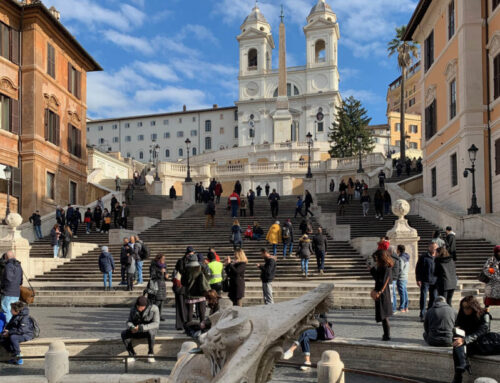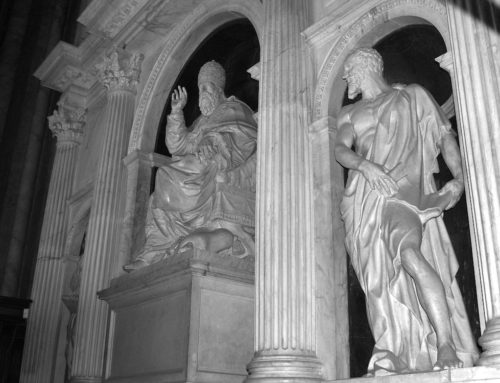by Claudia Viggiani
translated by Steve Barley
I leave the house and go there to sit under the pergola.
Whenever I can, even if only for a quarter of an hour, I go to Villa Giulia, to sit on the bench in the semicircular portico which is vaulted with an arbour painted in the Cinquecento by Pietro Venale da Imola.
The Villa is incredible and its atmosphere is unique. Like few other places in the world, Villa Giulia encapsulates architectural perfection, a perception of how it was lived and experienced and the rarity of the Etruscan finds which are on show in the museum on the first floor.
Villa Giulia was designed by Jacopo Barozzi and Bartolomeo Ammannati and decorated by Giorgio Vasari, Prospero Fontana, Taddeo Zuccari and others for Pope Julius III Ciocchi del Monte (1550-1555). It is a poetic building, suspended in time: welcoming, intense and enchanting, amusing and inspiring.
But above all it is a calm place and, at times, is filled with silence.
I walk in the garden, see the nymphaeum and hear the voices of people having fun in the boats of the tunnel-of-love. I see the Pope and his court strolling, or catch sight of them in the loggias which are placed one in front of the other, while glimpses of sky penetrate the architecture.
I admire the Ammannati reliefs and the caryatids. I retrace my steps and would like to go into the museum, but I have no time and I’ve already seen so much.
Next time I’ll go and look again at one of my favourite sculptures.
I go back to the bench beneath the painted pergola with its scenes of the alternating seasons.
My thoughts gather into ideas. My emotions blend together and transform ideas into text.
How is it possible that only schoolchildren visit this villa and its museum?
Where are the crowds, the thousands of adults who flock the streets of the city centre?
Rome is so much more than that which is forever fed to its tourists. And its sedentary inhabitants.
It is the city of beauty and of perfection. It brims so full of imposing, magnificent buildings that superlatives cannot describe it.
Here in Rome architecture, sculpture and painting fuse and form together to create a museum which is the envy of the world.
In Villa Giulia there are so many things to see – too many, according to a teenager who asks me, “What are you doing?”
“I’m writing”, I reply.
“And what are you writing?”
“About beauty and happiness”.
“Can I see?”, he asks.
“Yes, of course. It’s here, all around us. It’s here, between you and me.”
He turns round and looks at the portico, then at me, then at the portico again and says, “Ah, I hadn’t noticed.”
Thank you, young man. You have made my day!
Now I know that people can be taught to “see”. And that last glance of yours, meeting mine as I was leaving, is the proof.
On my way out I look up and see the two Ignudi who are holding the drapes open for me to pass under.
The show is over and I return to my life with great happiness.
Title photo:
Jacopo Vignola e Bartolomeo Ammannati, Ninphaeum, Villa Giulia, 16th Century, Rome











